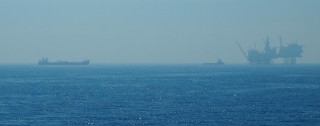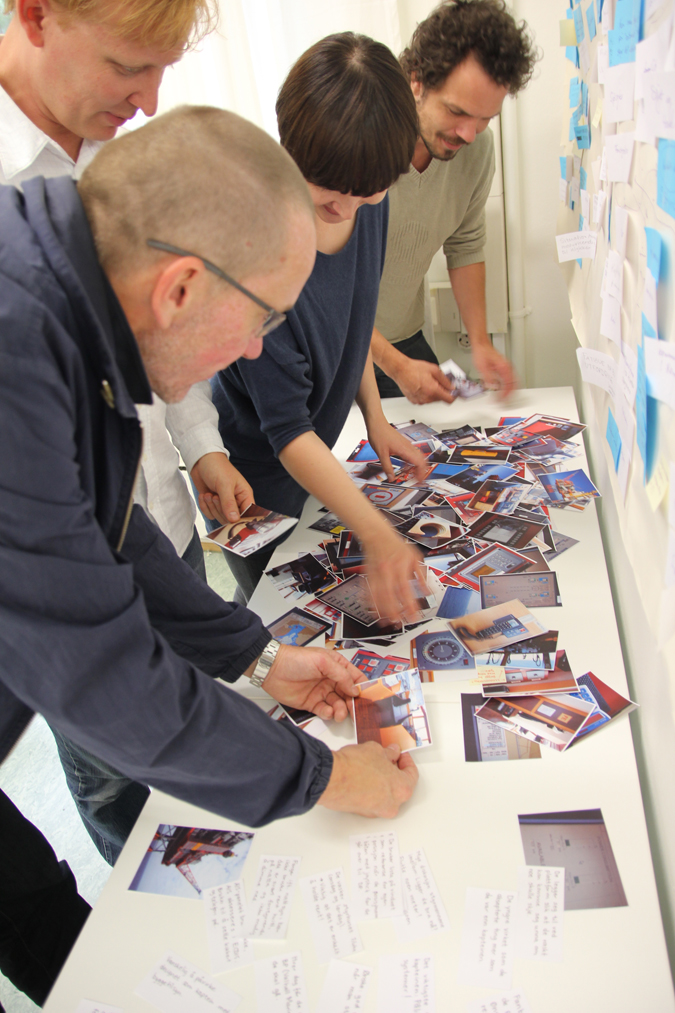A visit to sea with the Bourbon Topaz: Informing the future ship’s bridge

The gates at quay 23 in Tananger opened slowly and I walked in to the restricted area at the port with butterflies in my stomach. I was going out with a supply vessel to the North Sea for the first time. The reason why I was going out with Bourbon Topaz this morning in July was to learn about the bridge environment and its users. I work as a designer and researcher at the Oslo School of Architecture and Design in a project called the Ulstein Bridge Concept project. In this project, carried out in collaboration with Ulstein, Kwant Controls and Aalesund University College, we look at what the future bridge may look like. To be able to say anything about that, we need to talk to the users and learn about what they do on the bridge.
I climbed up the ladder to the bridge where I was met by the captain and some of the officers. The crew was busy with loading and unloading, but the captain still took the time to give me an overview of the ship and the bridge, its functions and how it worked for them. I felt welcomed by the crew and thought that this would be some nice days at sea. A few hours later we were on our way out, heading for the oil rigs. There was a lot to grasp and following what happened required a lot of attention. When I went to bed after 12 hours on the bridge I was exhausted, but I slept really well rocked to sleep by the waves of the sea.
The next few days I spent all my waking time on the bridge, only leaving it at meal times. I didn’t follow any specific watch, but spent time with both watch teams. I wanted to talk to all the officers and observe different kind of operations. When there was little to observe, I systematically went through all the equipment on the bridge. I specifically looked at adaptations the users had done to the equipment after it was installed. Such adaptations is like a gold mine for designers. Not only do they show what designs haven’t worked, they also often suggest clever solutions to how the designs ought to have been in the first place. The ship I visited had a number of adaptations like that.
Looking at the equipment and room layout is a good start when you want to get acquainted with a new working environment, but the real insight you get from talking to the users. I was quite surprised by how busy it was while we were by the platforms. It was not easy finding time to talk to the crew in-depth, rarely they had more than a few minutes between their tasks. If they got a longer period where nothing happened at the platform, they used the opportunity to do tasks that were awaiting, like paper work or cleaning.
When I did get the chance to ask the crew about their wishes for the future bridge, I found that the captain and some of the officers had a lot of ideas about what makes a good working environment, while others hadn’t thought about how things could be differently. I was surprised by their humble approach and how little they demanded of the design of equipment that, if used in the wrong manner, could mean life or death to them. It seemed like they had made some strategies to ensure that they were in control of the situation, and didn’t consider how a different design could make it easier for them to get this control.
After three days we were back in Tananger and it was time for me to depart the ship. Back at the office I shared my new insight with my colleagues as best as I could. We are 14 researchers and developers working at the Ulstein Bridge Concept project. These days we have just launched the first version of our bridge design together with Ulstein Group. This bridge called the Ulstein Bridge Vision™ is based on user’s needs and delivers a completely new bridge environment. The design will be developed further and the new insight we gained from my trip this summer, as well as from previous and future field studies, will be used to inform and inspire the design. I learned a lot from these days at sea, but the most important learning experience was maybe how much more there is to know. Therefore I want to go out to sea again soon.I would like to thank the captain and the crew at Bourbon Topaz for their kind hospitality and for sharing their thoughts and ideas with me. This input is invaluable to the further development of the Ulstein Bridge Concept.
This article was originally published in BON News #6 September 2012. BON News is the affiliate newsletter of Bourbon Offshore Norway.

The project team looking at photos from the field study.



